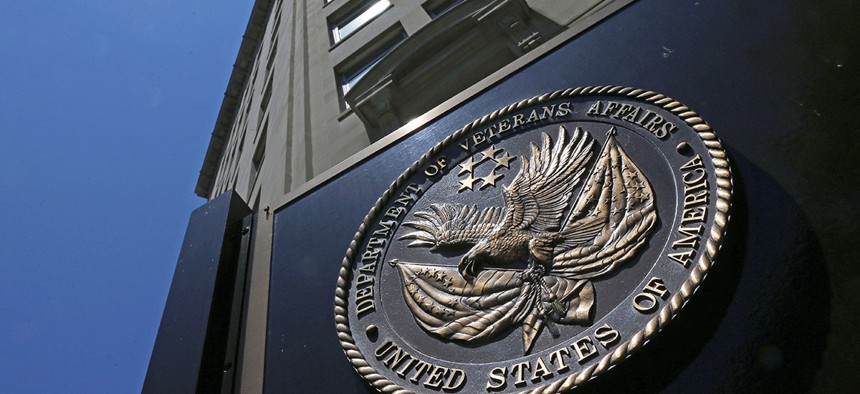VA Experiments with Real-Time Dashboard of Vets' Feedback

The seal affixed to the front of the Department of Veterans Affairs building in Washington. Charles Dharapak/AP File Photo
The agency wants feedback whenever and however veterans want to send it.
For decades, the Department of Veterans Affairs has had a listening problem.
The agency and its 300,000 personnel responsible for providing health care, benefits and other services to millions of veterans annually had a discombobulated network of 1,000 websites and 950 toll-free phone numbers to share and receive information. To compound customer confusion, VA’s standard methodology for collecting customer feedback from veterans relied heavily on annual surveys that—when finalized—took six months or more to produce any actionable efforts.
“We’ve been asking the questions we think must be important, but we haven’t asked our veterans what’s important to them,” former Chief Veteran Experience Officer Tom Allin said in 2015.
» Get the best federal technology news and ideas delivered right to your inbox. Sign up here.
Predictably, VA fared poorly among organizations in providing customer service and its reputation suffered, yet an internal effort to reform the agency’s customer service in 2015 led by former Secretary Robert McDonald is beginning to produce results.
Last week, VA announced the introduction of new customer relations management and survey software that will enable veterans to provide real-time feedback to the agency regardless of their location, device or communications medium. The software platform, provided by Palo Alto-based Medallia in a partnership with Deloitte Digital, will be rolled out in phases, beginning with a program pilot in the Baltimore region.
“Anywhere the veteran is, that’s where we want to be,” Brian Michael, senior sales director for Medallia’s government business, told Nextgov. “Our goal is to amplify the voice of veterans.”
Michael said Medallia’s platforms aims to do for VA what it already does for leading industry brands like Nordstrom, Hilton Worldwide and Mercedes-Benz. That means collecting feedback from both standard and non-traditional sources.
For example, Michael said one of VA’s early goals is a short, two- to three-question survey, providing veterans an open-ended text box to fill with their thoughts. Medallia will then mine that data with a text analytics engine and use it to create a visual representation, or live dashboard, of “the voice of the veteran,” Michael said.
The platform could, if the agency opts for the features, collect information from varied sources: Yelp reviews, Facebook posts, mobile apps, text messages, emails and transcribed voice messages left at VA call centers. VA officials also get alerts based on their location, so they can respond appropriately. When possible, it also collects contact information for the veteran leaving feedback so that VA employees can respond appropriately.
“The goal is to close the loop as fast as possible,” Michael said. “We want to equip VA employees with an understanding of what is going on and then acting and reacting to it. You’ll only see what you should see for your job, but everyone in VA will get a view of the voice of the veteran.”
VA employees will receive visualizations that change depending on their position, focus, region and seniority. In other words, front-line employees and patient advocates view dashboards of the data relevant to them while executives at VA headquarters will have a more in-depth look at larger data sets.
RJ Krawiec, a principal at Deloitte, told Nextgov the rapid access to data will help VA identify trends and issues within the veteran community much faster than the old-school paper surveys. It also puts more focus on the capabilities individual VA employees—a substantial percentage of whom are veterans themselves—have to affect change.
“Happy employees provide a better experience for customers,” Krawiec said.
VA’s newfound desire to listen better to the veterans is “step one,” Krawiec said. The next step in what McDonald frequently referred to as VA’s journey to providing world-class customer service will be acting upon it.
“The data itself isn’t the destination, it’s a waypoint to change,” Krawiec said.



